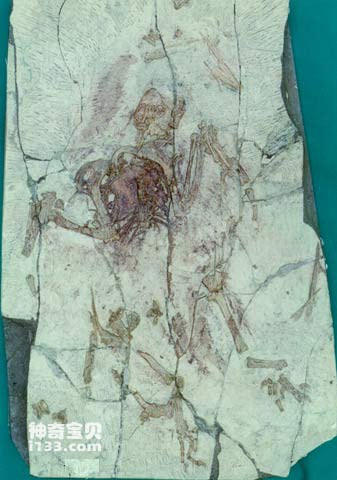In 1928, the famous American geological paleontologist Professor Gripp published a scientific masterpiece - "The Geological History of China". In this book, he proposed the term "Jehol Biota" for the first time to represent the comprehensive fossil group distributed in the wolf-finned fish rock system in East Asia. The name "Rehe" comes from the classic origin of the fossil group, which was the eastern part of Rehe Province at that time. Since the 1930s and 1940s, the name Jehol Biota has been widely used in various geological documents. After the founding of the People's Republic of China, Jehol Province was abolished, its western part was assigned to Hebei Province, and its eastern part was assigned to Liaoning Province. The classic origin of the original Jehol biota therefore fell in the west of today's Liaoning Province, that is, the western Liaoning region. However, the name Jehol Biota, which has a profound influence in the geological and paleontological community, still remains. In 1962, academician Gu Zhiwei, China's famous geological paleontologist, summarized in his classic treatise "Jurassic and Cretaceous in China" that Oriental leaf branch, Pseudomonas three-tailed plankton and Wolf-finned fish were the representatives. The "Rehe Biota" or "Rehe Fossil Group".


Fossils of Oriental Phyllophyllum, Pseudomonas three-tailed planktonic fish and Wolffin fish from the Jehol Biota
After the 1950s, scientific workers from the Chinese Academy of Sciences and China’s geology, petroleum and coal departments carried out a large amount of research work in the western Liaoning region. According to incomplete statistics, the Institute of Vertebrate Paleontology and Paleoanthropology of the Chinese Academy of Sciences and the Nanjing Institute of Geology and Paleontology alone have published more than 200 scientific research papers and academic monographs on the Jehol Biota. In recent years, research on the Jehol biota has made breakthrough progress. Early Cretaceous birds, hairy dinosaurs, mammals, amphibians and early angiosperms have been discovered one after another. Scientific research papers on these categories have been continuously published in Published in the world's two most authoritative academic journals, Nature and Science.
The current Jehol biota contains a very rich biological assemblage, which includes many categories of terrestrial fossil organisms from the early Cretaceous period, including fish, amphibians, reptiles, birds, mammals and ancient plants and their sporopollen. In the invertebrate group, bivalves, gastropods, arthropods (including shrimps, insects and spiders), ostracods, etc. Among them, the discoveries of early birds, hairy dinosaurs, primitive mammals and early angiosperms have become some of the most significant discoveries in paleontology in the 20th century. Their research results involve the origin and early evolution of many important biological categories in the modern biological world. Exploring the evolution process and laws of the earth's terrestrial ecosystems also provides rare clues and examples.



Ancient birds, hairy dinosaurs and primitive mammals of the Jehol Biota
Among such brilliant discoveries and research, the discovery and research of early birds can be said to be the most brilliant. The discovery and research of a series of early birds in the Jehol Biota, such as Chinabird, Chaoyangbird, Cathaybird, Confuciusbird, and Liaoningbird, broke the dominance of Archeopteryx in the field of bird origin research for more than 100 years. Therefore, an authoritative foreign scholar hailed these discoveries as "a beacon of primitive birds in the Mesozoic Era." American paleontologist Martin said: "The truly revolutionary changes in our understanding of the evolution of early birds occurred in China recently. 5 years. …Their appearance rewrote the history of bird evolution.”
In addition to more than 10 kinds of Mesozoic birds, the discoveries that have amazed paleontologists around the world include those "dragon-like bird-like" hairy dinosaurs, such as Sinosauropteryx, Archeopteryx and so on. The discovery of these hairy dinosaurs has led more scientists to believe that some small theropods were endotherms, and that birds evolved from one of these small theropods.
The rock formations containing the Rehe Biota are located in the Yixian Formation and Jiufotang Formation in the lower part of the Rehe Group in the stratigraphic sequence. The entire Rehe Group is a set of fluvial and lacustrine deposits containing volcanic rocks, including the Yixian Formation, Jiufotang Formation, Shahai Formation and Fuxin Formation from bottom to top. The Jehol Group is widely distributed in the western region of Liaoning Province in Northeast China, and its depositional age has been one of the controversial issues in Chinese geology circles.
In recent years, many geologists and paleontologists have been trying to explore and demonstrate the age of the Jehol Group using their respective fossil categories, isotope dating, magnetostratigraphy and other means and methods. Recent research shows that the age of the Yixian Formation should be the early Cretaceous, with an absolute age of about 135 million years ago.
animal tags:
We created this article in conjunction with AI technology, then made sure it was fact-checked and edited by a Animals Top editor.